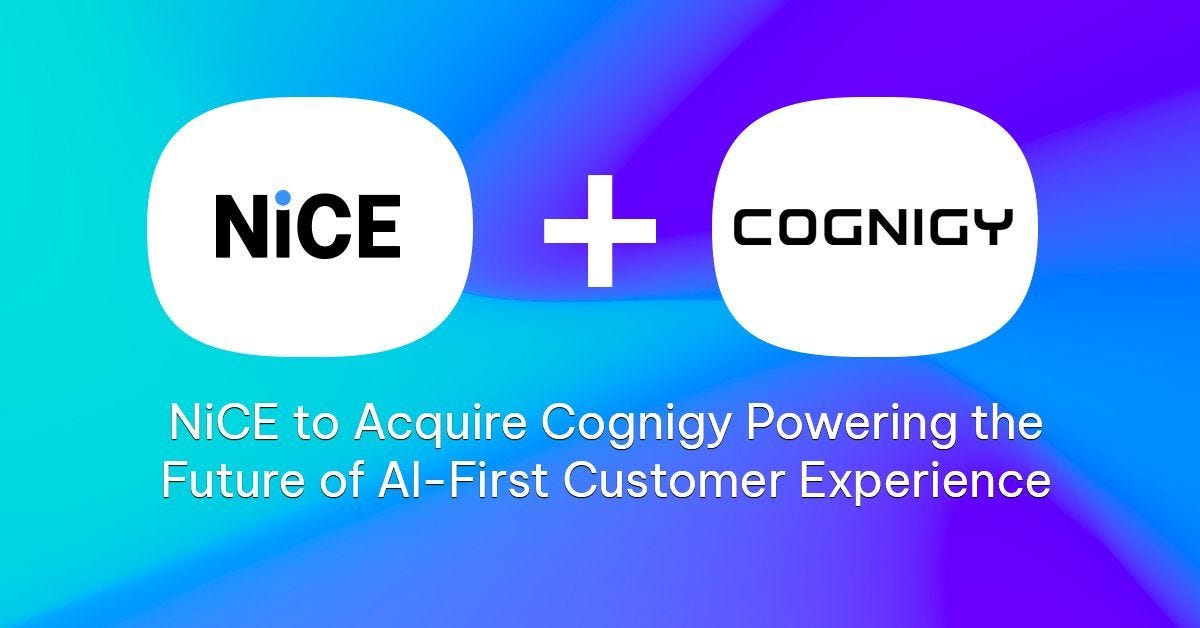NiCE’s planned acquisition of Cognigy, in a deal valuing the company at approximately $955M, isn’t just a game-changer for both companies; it’s a major market move worth unpacking.
NICE is acquiring one of the leading players in conversational AI. Cognigy has been named a Leader in Gartner’s Magic Quadrant for Enterprise Conversational AI Platforms since its 2022 debut and projects 80% ARR growth through 2026.
The market reaction has been very positive: Cognigy is a recognized leader in conversational AI (ConvAI) that has swiftly adapted to both Generative and Agentic AI, demonstrating robust architecture and standout execution.
The acquisition fills a clear strategic gap in NICE’s portfolio and positions the company to expand beyond the contact center—a goal CEO Scott Russell has emphasized repeatedly.
The price tag has sparked some discussion. SaaStr offered a solid analysis, and I agree that a ~15x forward revenue multiple represents a good deal for both sides. What came as a surprise is that this wasn’t a competitive bid. The price tag was probably at a level that only a handful of large players could realistically consider, most of whom are already well down the path of building their own platforms.
Despite raising a hefty $165M, Cognigy didn’t pursue an aggressive growth strategy. It stayed focused on the CX market, and only recently began investing to expand in North America. I would argue it wasn’t capturing its fair share of the North American market, something the NiCE acquisition should quickly correct.
With estimated revenue around $35M in 2024, Cognigy reflects a market still in its early stages. The company reports deployments across a thousand brands. While it counts several large multi-brand customers, this figure suggests a significant volume of small deployments, probably through agencies.
The Conversational AI market has remained highly fragmented. Hyperscalers—AWS, Google, and Microsoft—are the dominant players by revenue, each generating a couple of hundred million dollars according to my estimates. They are followed by a long tail of providers, with only a handful having crossed the $100M threshold.
I’ve been asked whether this acquisition signals the beginning of the end for independent providers as they consolidate into established software categories.
It’s true that major application providers across categories—CRM, CX, data, and automation—aren’t just layering in AI features and adding agents, they’re assembling full-stack AI platforms that combine Conversational, Generative, and Agentic AI.
But while it’s ultimately a platform game, solutions need to specialize in the near term to deliver on their promise.
Another important factor is that enterprises are showing little interest in adding complexity to the platforms they already have in place. Agentic AI, by enabling agents to handle the intricacies of application integration, opens a path for independent AI platforms to emerge and scale.
NiCE has hinted at a 2-pronged strategy, integrating Cognigy into its CXone Mpower platform and continuing the company’s standalone trajectory.
Only time will tell how these AI platforms take shape—but one thing is certain: the market is at an inflexion point and the evolution will be fascinating to watch.



